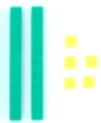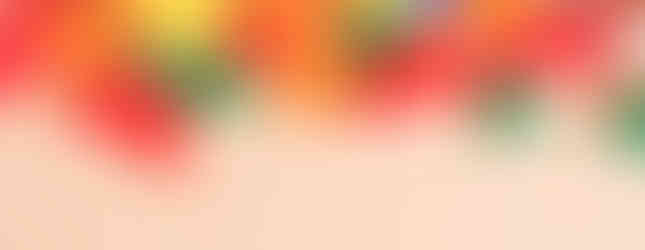Episode 6: Creating Powerful Visual Images
- Kids Math Talk

- Jul 21, 2020
- 11 min read
Updated: Jul 30, 2021

Episode Download:
When one of my nieces was in 3rd grade I was helping her study some new vocabulary and one of the words- border- just completely stumped her. The map of Michigan and the surrounding states that we had as representations just weren’t connecting for her. Me just explaining the concept was not enough - pointing to and highlighting the different borders on the map wasn’t enough- it just wasn’t clicking. She needed something more concrete to help her create a new image in her mind that she could then associate with the new word.
I thought about how to do this and then had her stand up and walk from the kitchen into the dining room and we talked about where the tiled kitchen floor ended and the hardwood dining room floor began. She could stand on that border, she could touch that border and after some more practice walks from the kitchen to the dining room, and then the dining room to the living room, she understood the meaning of a border.
When learning this new concept, concrete tools needed to be introduced in order to reduce her cognitive load - she needed to be able to think about relationships and how to connect to her own funds of knowledge without also having to worry about memorizing the exact abstract definition at the same time. When I ask her now, a year later, about this concept, it’s as if I can see her brain pulling up the visual image of her walking from room to room-she still talks about this experience and she still knows the meaning of the word border.
Children need physical tools and meaningful experiences to help them make connections and associations with new concepts, even math concepts.
In Episode 6, we talk about using physical tools to create meaningful math experiences and powerful visual images for children.
Simply put, we can help children create powerful visual images for new concepts by giving them meaningful experiences using math manipulatives.
Let’s start with a definition. I just mentioned the word manipulative. A math manipulative is a concrete object that you can move around, or manipulate, and use to help you understand a mathematical concept.
Some examples of concrete manipulatives are:
Tiles
Base 10 blocks
Craft sticks
Interlocking cubes
Pattern blocks
Bead Strings
Cuisenaire Rods
Double sided counters
Or even dry beans
According to research discussed in the book Teaching Student-Centered Mathematics, “anytime a concept is new, regardless of the ages of the students, manipulatives can help make the concept visual, concrete, and connected to other ideas students have learned.” (Karp, K. et al. 2014, p.24). Based on this research, all children, whether in elementary school, high school, or beyond, should be very familiar with math tools and manipulatives. As a child, I do remember using blocks during free time, but never to advance my own mathematical thinking about a concept during class. None of the other manipulatives that I just mentioned were a part of my upbringing. You might not remember these from your past either-but just because we didn’t have them as a part of our childhood doesn’t mean that they shouldn’t be a part of our children’s current and future math stories. We can learn about these math tools to create new avenues for our children to make connections and deepen their mathematical understandings.
Fact #1 - Humans place meaning onto manipulatives

Fact number one to remember is that manipulatives don’t have any inherent value or meaning. We use tools strategically and the person using the manipulative places this value and meaning onto the object by assigning a unit. So in that sense, one cube could represent one unit and another day, that same cube could represent 10 units. These are wonderful because once a child is familiar with this unit assigning concept, the same manipulative can be used in a variety of contexts.
In Episode 5 we learned that one of the components of fluency is flexibility and being able to see and approach a problem in a variety of ways. Manipulatives help children on this journey of discovering - of creating powerful visual images - of learning how to adapt and adjust - because when using concrete manipulatives children can literally pick up the different parts of a number and move them around in order to learn more about their relationship.
Fact #2 - Children Hear Us

Another fact for us to remember is that when we as adults speak, children hear us - even if you don’t think they are listening. They believe us and take what we say as absolute truth. Because of this, we have to be extremely careful about what visual images of concepts we are introducing.
Take Base-10 blocks for example.

We have to think about when and why we are incorporating these manipulatives. What is our goal? Is it to be able to identify ones, tens, and hundreds? Or is it to begin to gain a deeper understanding of place value?
We place the meaning onto manipulatives and therefore the value of each Base 10 block piece should be able to change, it is the relationship between the pieces that will remain constant.
Fact #3 - Visual Images are difficult to replace
Fact number three to remember is that once a visual image of a concept has been built, it becomes increasingly difficult to change as a child gets older. This is why, when referring to Base-10 blocks, I advocate for saying “one cube, one long, and one flat. I am training myself to say this instead of simply saying ones, tens, and hundreds because I believe in helping children understand relationships in order to become flexible thinkers.
If the concept we have built into children’s minds are fixed instead of flexible, and isolated instead of connected, it will be more difficult for children to adapt their thinking for higher level mathematics. This specific language of cube, long, and flat is one example of an instructional move that allows children the chance to build a visual image that will not become a cognitive obstacle in later grades.

Allowing children the chance to focus on the relationship between the pieces - one long is 10 cubes, and one flat is 10 longs - builds this flexible and powerful visual image of the concept.
Download the PDF at the beginning of this post for a pictured list of common manipulatives and name suggestions.
Now let’s imagine, for example, two different ways of approaching the addition problem 3+8. Option #1 involves no hands on manipulatives, only us, as adults verbally explaining how adding 3 to 8 will give you 11 and asking children to repeat and memorize while working. If this is new learning for a child, the only image created will be the abstract numbers 3, 8, and 11. This option leads to children forming a fixed model of what 11 can look like in their mind, and the fact that 3 and 8 are two parts of the whole 11 might be completely missed by some children. This simply becomes another isolated fact to memorize.
Most likely, when a child learns this way, the next time a problem like this appears, they will recall abstract numbers and possibly a procedure - surface level understanding, and not the deep understanding that is afforded by meaningful connections and flexible mental images about addition.
Having manipulatives next to a child while completing the problem is a step we can take to promote understanding, but we do have to be careful here because although “physical and virtual manipulatives, as well as other concrete models, can help students visualize mathematical relationships (NCTM 2014, p.83), “the most widespread misuse of manipulatives occurs when teachers tell students, ‘Do exactly as I do.” (Karp, K. et al. 2014, p.24). Just because a child is using manipulatives, does not mean that they are actively engaged in making sense of problems and thinking about strategies. They might just be imitating what you have done without really understanding.
If we prescribe how and when to use manipulatives, that is likely to be the only way they will be able to see them and work with them. This is doing a disservice to children and is not helping them to create a visual image that deepens their understanding of mathematics.
A more powerful visual image is created when children are allowed to choose a manipulative that makes sense to them. This is where identity factors into how and how long children might try to rely on manipulatives.
Allowing children to choose their manipulatives affirms their identity as competent doers of mathematics instead of passive imitators, it gives them ownership of their learning and values their thinking-
Let's not fall into the trap of telling kids which tool they should use for any particular task.
Fact #4 - Manipulatives + Meaningful Tasks
Fact number four is that we need to use manipulatives in conjunction with meaningful tasks in order to help create powerful visual images.
We can take this same problem, 3+8, and turn it into a meaningful open-ended task- such as find two numbers whose sum is 11. Then children would be able to use manipulatives-pieces that are right there ready for them to grasp or click and drag on a computer or tablet- and that make sense to them in order to construct new knowledge.
They might use a tens frame and double sided counters to help them make the connection that 3+8 is one more than 10, or one more than 3+7. Or maybe they will use craft sticks and find a different fact altogether, such as 4+7 or 2+9. Maybe they used dry beans to explore and started thinking about the fact that 11 is an odd number because they arranged the beans into groups of twos. That could lead in the idea of patterns and an extended exploration of trying to figure out if an odd number plus an even number always gives you an odd sum. At the end of the activity, when children have the chance to share their work with the class, imagine how many visual representations of the number 11 each child would be gaining. “This focus on multiple representations [also] supports the equity-based practice to go deep with mathematics” (Huinker and Bill 2017, p.140).
The point is that this second approach using manipulatives and an open-ended task gives a child a more meaningful experience that allows them to create a flexible mental image of what a concept can look like. It also gives so much more information about what a child already knows, what they are learning, and what instructional moves teachers can make next in order to move them on the path to fluency.
You might be wondering why we have spent so much time talking about concrete objects instead of just skipping ahead to more visual drawings.
Fact #5 - Visual Images + CRA
Visual images work in conjunction with the instructional sequence of Concrete, Representational, and Abstract or CRA for short. This sequence is used to help children along their path toward fluency and aides in developing a flexible concept image for children.

To put it another way, I like to think about when I first started practicing boxing.
The first class I ever took I was completely lost - the instructor kept calling out jab, and then hook, and then uppercut, and I was getting everything wrong. I didn’t have any previous experience. After a few classes, modeling from the instruction, and more trial and error with the moves, I noticed I was getting stronger and more fluid. This I equate with the concrete portion of the sequence.
After a few more sessions, when the instructor called out moves like a jab or uppercut I was finally making an association with a mental image forming in my mind how to move my body for a certain punch before hitting the bag. My strikes were harder and I started getting more accurate.This I equate to the representational portion of the sequence. I couldn’t have gotten to this point without first having that concrete stage with trying out the moves and making new connections.
After a few more months of classes, I started reading and talking more about the technical aspects of boxing moves to work on perfecting my craft, all the while continuing to use visualizing techniques to deepen my understanding - this is think of as the abstract phase.
When the representational phase has really been achieved- it really is the re-presentation of the concrete playing over and over again in one’s mind in order to continue to think about and solve a problem. And the abstract phase took awhile to achieve -not days, not weeks, but months of intensive practice.
Maybe you can apply this CRA sequence to a hobby that you have or maybe even something like yoga.
For instance, if I were to say chair pose - what image enters your mind?
If you have some funds of knowledge and experience with yoga, you will be able to move past the concrete and me saying - chair pose-will trigger your mind to make an association, pull up an image and visualize either yourself or someone else completing the chair pose with their weight moving toward their heels as they mimic sitting in a chair.
If you are not familiar with this pose or with yoga, you might have had a harder time creating that mental image or any mental image at all.

It’s the same for children and mathematical concepts. Drawings represent a child’s previous exposure to and understanding of a concept. If a child has not spent time making sense of relationships and connections by using concrete manipulatives and they have no funds of knowledge from which to draw, they will not be able to make associations and create mental images on their own.
A child in this concrete part of the sequence will often times say something like “ I don’t know” or “ I don’t get it” when asked to draw a picture of a math concept with dots, rectangles, tally marks, or some other representational tool. And they are telling the truth. We need to hear that and believe that. They are trying to tell us that they are unable to create a visual representation to help- they need more concrete experiences in order to be able to make an association and have success with drawing about a math concept.
You as the teacher or parent can help a child along this path toward moving into the representational and abstract by modeling various representational tools when you are explaining how you might approach a problem. This will help a child know that there are many connections that can be made, but just remember that skipping the concrete portion of the sequence altogether and expecting all children to automatically know how to draw mathematical models could lead to increasing a child’s frustration and anxiety.
Teachers - “Effective use of technology and other tools requires careful planning. [We] need appropriate professional development to learn how to use them effectively” (NCTM 2014, p.82). So share this podcast with your colleagues and start a conversation about how and when to implement manipulatives throughout the year. Make room in your grade level team meeting agendas for 5 minutes for this learning to occur- and then at each meeting take turns sharing how you use manipulatives in your classroom or a new tool that you have discovered. If you have a math coach in your building or district, invite them to be a part of these conversations. If you are online in the fall, you can still do this virtually, using physical manipulatives and your camera or by trying out some virtual manipulatives.
There are some wonderful sites for virtual manipulatives including those from-
And my personal favorite, Brainingcamp. This site is incredible - It has just about every virtual manipulative you can think of, everything is so user-friendly, there’s a built in virtual white board and they even give you ideas about how to implement each tool. It’s amazing. Trust me - you need this in your life.

Parents - Encourage the development of powerful visual images at home by making a math manipulatives kit for your child to use-start with 20 dry beans or dry cereal pieces to use as counters.
It doesn’t have to be stored in anything fancy - I suggest a gallon size zip top bag. Have your child help you make this so that they take more ownership for the contents. Download the PDF at the top of this post for a download of possible items to include.
To be clear, simply naming tools is not the end goal. We use math tools strategically in order to help create powerful visual images and to make connections between many different representations. The goal is to deepen a child’s understanding about mathematical concepts; to help children know and believe that they are doers of mathematics; and to create positive Kids Math Talk. Images can either become fixed or flexible in the minds of children- the form they take is impacted by how we introduce the concept from the start. The question I leave you with today is, what kinds of visual images are you helping to create?
Episode Sources:
Huinker, D., & Bill, V. (2017). Taking action: Implementing effective mathematics teaching practices in K-grade 5. National Council of Teachers of Mathematics.
Karp, K., Bay-Williams, J, Van de Walle, J. et al. (2014). Teaching Student-Centered Mathematics Vol. II : Developmentally Appropriate Instruction for Grades 3-5. Pearson.
National Council of Teachers of Mathematics (NCTM). 2014. Principles to actions: Ensuring mathematical success for all. NCTM.
_edited.jpg)














Comments